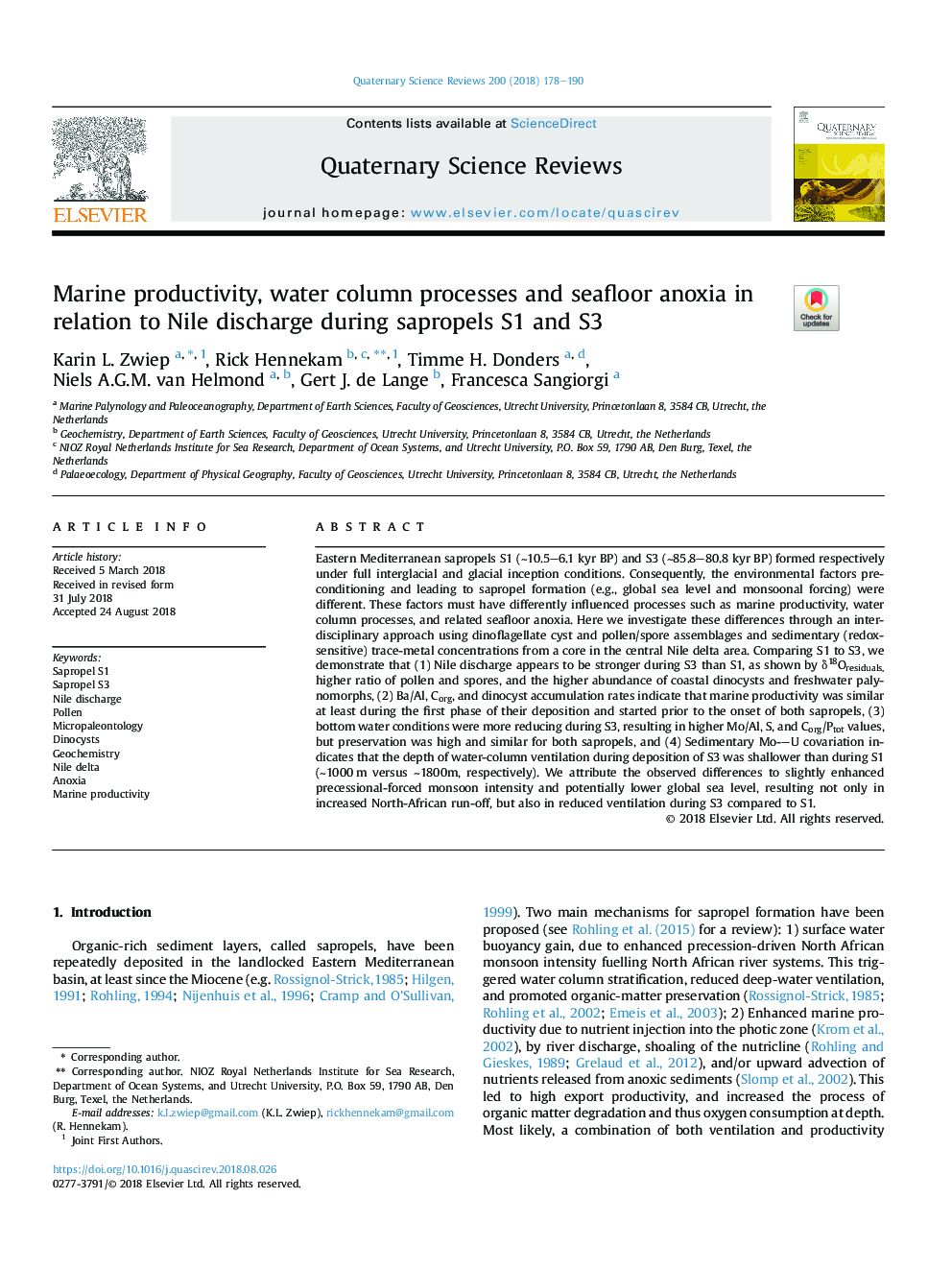| کد مقاله | کد نشریه | سال انتشار | مقاله انگلیسی | نسخه تمام متن |
|---|---|---|---|---|
| 11010079 | 1812801 | 2018 | 13 صفحه PDF | دانلود رایگان |
عنوان انگلیسی مقاله ISI
Marine productivity, water column processes and seafloor anoxia in relation to Nile discharge during sapropels S1 and S3
دانلود مقاله + سفارش ترجمه
دانلود مقاله ISI انگلیسی
رایگان برای ایرانیان
کلمات کلیدی
موضوعات مرتبط
مهندسی و علوم پایه
علوم زمین و سیارات
زمین شناسی
پیش نمایش صفحه اول مقاله

چکیده انگلیسی
Eastern Mediterranean sapropels S1 (â¼10.5-6.1 kyr BP) and S3 (â¼85.8-80.8 kyr BP) formed respectively under full interglacial and glacial inception conditions. Consequently, the environmental factors preconditioning and leading to sapropel formation (e.g., global sea level and monsoonal forcing) were different. These factors must have differently influenced processes such as marine productivity, water column processes, and related seafloor anoxia. Here we investigate these differences through an interdisciplinary approach using dinoflagellate cyst and pollen/spore assemblages and sedimentary (redox-sensitive) trace-metal concentrations from a core in the central Nile delta area. Comparing S1 to S3, we demonstrate that (1) Nile discharge appears to be stronger during S3 than S1, as shown by δ18Oresiduals, higher ratio of pollen and spores, and the higher abundance of coastal dinocysts and freshwater palynomorphs, (2) Ba/Al, Corg, and dinocyst accumulation rates indicate that marine productivity was similar at least during the first phase of their deposition and started prior to the onset of both sapropels, (3) bottom water conditions were more reducing during S3, resulting in higher Mo/Al, S, and Corg/Ptot values, but preservation was high and similar for both sapropels, and (4) Sedimentary Mo-U covariation indicates that the depth of water-column ventilation during deposition of S3 was shallower than during S1 (â¼1000â¯m versus â¼1800m, respectively). We attribute the observed differences to slightly enhanced precessional-forced monsoon intensity and potentially lower global sea level, resulting not only in increased North-African run-off, but also in reduced ventilation during S3 compared to S1.
ناشر
Database: Elsevier - ScienceDirect (ساینس دایرکت)
Journal: Quaternary Science Reviews - Volume 200, 15 November 2018, Pages 178-190
Journal: Quaternary Science Reviews - Volume 200, 15 November 2018, Pages 178-190
نویسندگان
Karin L. Zwiep, Rick Hennekam, Timme H. Donders, Niels A.G.M. van Helmond, Gert J. de Lange, Francesca Sangiorgi,